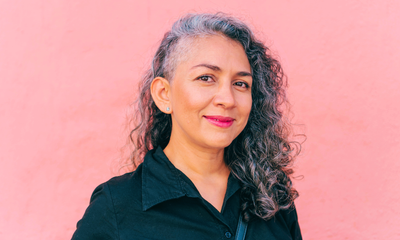Latinas are vulnerable to developing eating disorders because of our cultural mores, our oppressed social conditions and generational violence. I checked into rehab for my eating disorder and it was an incredibly white-centered experience. Treatment models MUST acknowledge Latinas and us as Latina, must empower ourselves to demand treatment.
I attended several predominantly-white institutions growing up. White people stuttering over my last name and their curiosity about what part of Mexico I was from and the legal status of my parents was the norm. I wasn’t surprised when “White America” was written on the white board or when they tossed around racial slurs like they did their limbs in unrhythmic appropriations of hip-hop moves. But, this. This space at the Renfrew Center where the under-weight relive traumas while sipping Ensures, where the all-over weight discuss pregnancies lost to purging, and where the over-weight break down over snickerdoodles and shame. I needed someone that spoke our experience and wore our scars as mujeres Latinas. Latinas and eating disorders need a cultural approach. Punto.
Studies support that binge eating disorder is the most common eating disorder among Latinx in America.
Eating disorders have been inaccurately disseminated as a white-woman’s disorder in both pop culture and in empirical research. The front stage was given to the starving-in-suburbia Christina Riccis and Katharine McPhees. Sofia and Camila didn’t even make the stage crew. Even if Latinas had been equally included in research and in the media, odds were stacked against us to have access to treatment. According to the National Partnership for Women & Children, approximately three million households in America are headed by Latinas. Of these households, 1.1 million live under the poverty line. When you earn just 54 cents per dollar a white man earns you must prioritize rent over rehabilitation. For instance, the average cost for an initial consultation with a nutritionist alone ranges between $150 and $225.
If you are a Latina that has moved monetary mountains, pace yourself because cultural barriers persist in any tax bracket. Even the most devout Catholic mami will tell you to go talk to a psychic or do a limpia of your aura with an egg wash before encouraging you to go to a support group. ¿Qué dirán la gente? All too often, the antiquated “We don’t talk about those things” mentality keeps Latinas chained to their traumas and illnesses. These approaches are typically learned behaviors that have maintained generational cycles of abuse and trauma. In moments of frustration I remind myself that older generations were born into environments far different from the playgrounds I grew up on.
Like many Latinx families, my family comes from a background of political violence and domestic violence. When you live in these toxic environments, you are taught survival skills and prioritize visceral need over emotional and psychological need. Long work hours, minimal earnings and oppressed social conditions preclude energy, time and resources to invest in mental health and healing. Women are often taught to keep their feelings inside and to focus on taking care of others. They are programmed to physically take up little space and to not burden others with their feelings.
In femicide-latent Latin America, women’s bodies are policed and scrutinized. We are taught to be physically-appealing with thin, light-skin bodies and straight hair to attract potential spouses. But, not too appealing. We are put down for showing too much leg or too much cleavage. We are warned that if we dress like a puta men will harass and rape us. In essence, we are baptized in misogyny and tasked with absolving the sins of our perpetrators. We are raised to expect imminent betrayal from our bodies and are vilified the day a man feels entitled to grope us. We are not taught to seek justice but to channel the blame, anger, and shame we feel inwardly to the point that we victimize our own bodies with venomous resentment and the deprivation of self-care.
Treatment models need to be culturally sensitive with Latinas and eating disorders. In general, treatment centers and resources must be better accessible to women of color. Studies support that binge eating disorder is the most common eating disorder among Latinx in America. This is unsurprising because Latinx also have higher rates of obesity than non-Latinx whites. Present hiring practices and staff in treatment centers must reflect the diversity of women that suffer from eating disorders. Additionally, centers must have members that speak Spanish and must expand their outreach efforts to provide accessible treatment to Latinx communities.
I can’t change the wage gap overnight. I can’t turn Latin America into an oasis for Latinas in a week. I can’t dilute the heinous desires of some men to attack women. I can’t extract eating disorders from the countless women slowly dying from them. But what I can do is empower other Latinas to seek treatment for their mental health regardless of family opinion. I can encourage Latinas to never internalize the harmful comments and actions of others done onto them. I can inform Latinas that there are free resources available. I can tell Latinas what I was never told: that your body is yours and yours alone. Take care of it. Nourish it. Defend it. Love it.
Like This? Here is one to read…
Decolonize Your Eating > Veganism In Our Culture
Would you like to share your story? Go to Community Submissions
Priscilla Gutierrez







